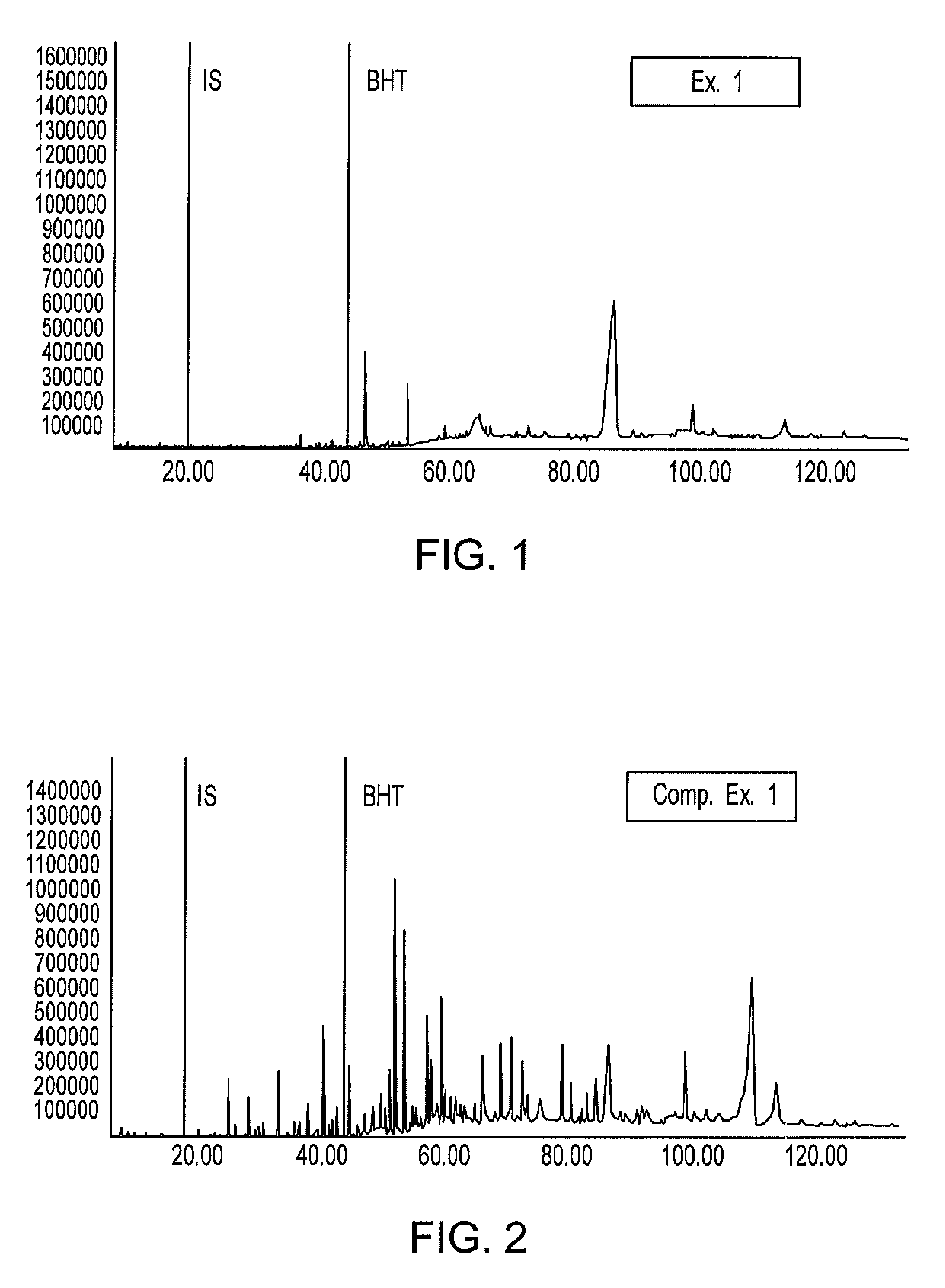Deodorized plant colorant derived from Ipomoea Batatas
- Summary
- Abstract
- Description
- Claims
- Application Information
AI Technical Summary
Benefits of technology
Problems solved by technology
Method used
Image
Examples
example 1
Colorant Formulation Derived from Ipomoea Batatas
Solution
[0108]Eight liters of a primary purified colorant extract (adsorption-treated product of Ipomoea Batatas colorant extract) obtained by the same method as in the comparative example were treated at 20° C. and 3.5 kg / cm2 using an ultrafiltration membrane (AHP-2013 Membrane, trademark of Asahi Chemical; molecular weight cut-off: 50,000) (membrane separation treatment). The obtained membrane-treated product that passed through the membrane was subsequently adjusted to a pH of 2.0 with sulfuric acid, and the resulting product was stirred for 30 minutes at a temperature of 40 to 80° C. (acid treatment). Five liters of water were subsequently added to this acid-treated product to perform reverse osmosis membrane treatment (NTR-7250 Membrane, trademark of Nitto Denko, molecular weight cut-off: about 3,000), giving 1 L of membrane-treated product that did not pass through the membrane (membrane separation treatment). During this treat...
example 2
Colorant Formulation Derived from Ipomoea Batatas
[0110]Sixty grams of water and 15 g of dextrin were added to 30 g of a colorant extract concentrate with a color value E(10% / 1 cm) of 300, which was prepared by the same method as in Example 1, and had been significantly deodorized and purified. This product was spray-dried to prepare 25 g of a colorant formulation (powder) containing the colorant derived from Ipomoea Batatas, whose color value E(10% / 1 cm) was 350. When sniffed, this colorant formulation was completely odor-free.
example 3
Colorant Formulation Derived from Ipomoea Batatas
Solution
[0111]Eight liters of a primary purified colorant extract (adsorption-treated product of Ipomoea Batatas colorant extract) obtained by the same method as in Comparative Example 1 were concentrated under reduced pressure to remove ethanol, and diluted with water to a color value E(10% / 1 cm) of 10.
[0112]The obtained colorant extract was adjusted to a pH of 3 with sodium hydroxide, after which an acid protease (Newlase F3G (Rhizopus niveus), 14,000 u / g; Amano Enzyme) was added in an amount of 0.02 wt %, and the mixture was reacted for 8 hours at 45° C. (enzyme treatment). After the reaction, 5 L of water was added to the enzyme-treated product to perform reverse osmosis membrane treatment (NTR-7250 Membrane, trademark of Nitto Denko, molecular weight cut-off: about 3,000), filtering out the aroma components and impurities from the enzyme-treated product, thus giving 1 L of membrane-treated product that did not pass through the m...
PUM
| Property | Measurement | Unit |
|---|---|---|
| Fraction | aaaaa | aaaaa |
| Acidity | aaaaa | aaaaa |
| Concentration | aaaaa | aaaaa |
Abstract
Description
Claims
Application Information
 Login to View More
Login to View More - R&D
- Intellectual Property
- Life Sciences
- Materials
- Tech Scout
- Unparalleled Data Quality
- Higher Quality Content
- 60% Fewer Hallucinations
Browse by: Latest US Patents, China's latest patents, Technical Efficacy Thesaurus, Application Domain, Technology Topic, Popular Technical Reports.
© 2025 PatSnap. All rights reserved.Legal|Privacy policy|Modern Slavery Act Transparency Statement|Sitemap|About US| Contact US: help@patsnap.com

